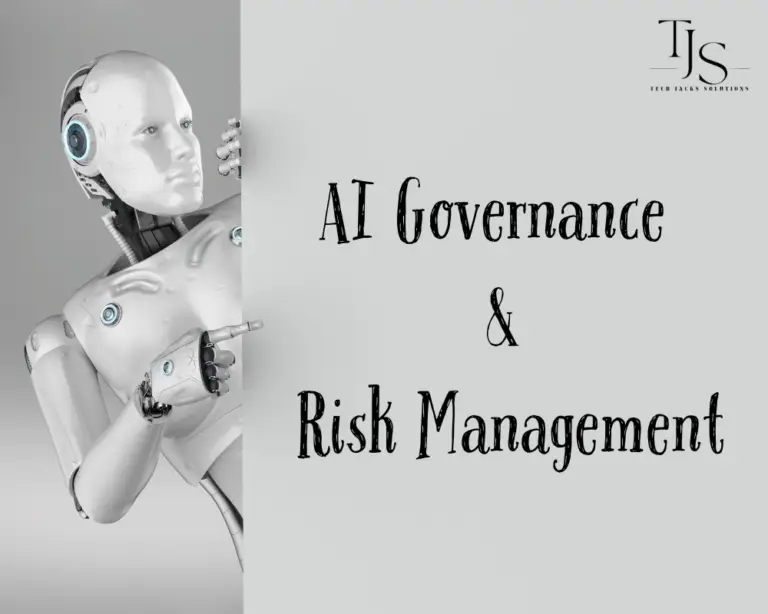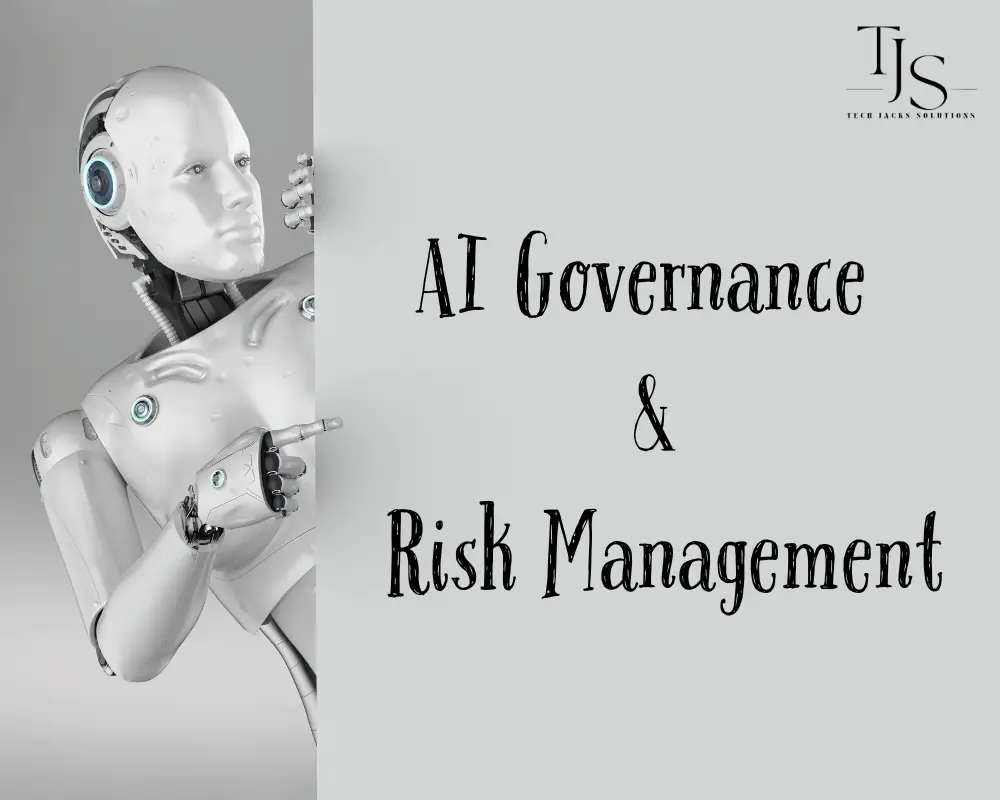- techjacksolutions.com
- Mon - Friday: 8.00 am - 6.00 pm
We are creative, ambitious and ready for challenges! Hire Us
We are creative, ambitious and ready for challenges! Hire Us
Over 10 years we help companies reach their financial and branding goals. Engitech is a values-driven technology agency dedicated.
411 University St, Seattle, USA
+1 -800-456-478-23

Our AI Governance & AI Risk Management service provides expert guidance to help organizations integrate AI into their operations while maintaining stringent security controls and adhering to industry standards. We focus on ensuring AI systems are deployed ethically, securely, and in compliance with applicable regulations. This involves:
Engagement Type
We operate under a structured methodology that incorporates best practices from both general cybersecurity and AI-specific governance frameworks. This comprehensive approach ensures holistic AI lifecycle management, from data sourcing to model decommissioning, with continuous oversight for new regulatory and ethical requirements.
NIST AI RMF
ISO/IEC 42001
EU AI Act (proposed legislation)
OWASP AI Security
COBIT 2019 (AI Governance)
ISO 27001:2022
NIST SP 800-53
CIS Controls v18
HIPAA
SOC 2
By aligning with these AI-specific and general security frameworks, we ensure that every aspect of your AI initiative is robustly governed—from algorithm design and data handling to ethical considerations and ongoing regulatory compliance.
When engaging our AI Governance & AI Risk Management service, clients receive:
Our methodology follows a multi-phased approach:
Activities
Value Delivered
Activities
Value Delivered
Activities
Value Delivered
Activities
Value Delivered
Activities
Value Delivered
Activities
Value Delivered
We recognize that SMBs have unique needs and budgets. To accommodate varying levels of complexity, we offer three main tiers:
|
Tier |
Scope |
Cost Range (USD) |
Typical Timeline |
|---|---|---|---|
|
Basic |
– One-time AI Risk Assessment – High-level Governance Policy |
Contact for customized pricing | 4–6 weeks |
| Standard | – Full assessment & gap analysis – Detailed policy pack & model lifecycle controls – Staff training (remote) – Incident response update – Basic cloud alignment (CSA CCM) |
Contact for customized pricing | 8–12 weeks |
| Comprehensive | – All standard inclusions – Multi-phased engagements – Additional audits (SOC 2 readiness) – Ongoing governance oversight – Full alignment with multi frameworks (ISO 27001, FedRAMP, etc.) |
Contact for customized pricing | 12+ weeks & optional retainer |
Notes
We actively monitor evolving AI regulations (e.g., the proposed EU AI Act, U.S. state-level AI laws, FTC guidelines) to keep you ahead of potential compliance challenges. Future service updates may cover specialized issues like AI fairness reporting, explainability requirements, and expanded privacy mandates.
Beyond standard compliance checks, we plan to introduce add-on services for third-party AI vendor oversight. This includes lightweight vendor risk questionnaires—covering data residency, privacy clauses, and model usage terms—to ensure your external AI tools align with core security and privacy needs.
As organizations face increasing scrutiny over fairness and discrimination risks, we are developing a “Bias & Fairness Toolkit” for clients needing basic AI fairness checks or structured guidelines on ethical usage. This optional add-on will highlight scenario-based best practices and provide checklists to mitigate unintended bias.
We aim to expand our service with semi-automated model monitoring solutions (e.g., anomaly detection, policy compliance bots) to help guard against unauthorized model usage or potential data leaks. While currently in development, these next-gen features will complement our policy-driven approach for clients seeking more robust oversight.
Given the rise of data sovereignty laws (GDPR, CCPA, etc.), a future extension of our service will focus on privacy impact assessments and specialized data-handling protocols for AI. We will include region-specific guidance (EU, APAC, and beyond) to address the intersection of AI usage and cross-border data restrictions.
Responding to client demand for hands-on oversight, we’re exploring a fully managed AI governance service. This subscription-based option would include periodic audits, vendor risk reviews, and real-time policy updates—ensuring your AI ecosystem remains secure and compliant as it evolves.
As AI deployments increasingly shift to containerized and serverless environments, we plan to incorporate further best practices from sources like the CIS Benchmarks and CSA Serverless Security guidelines—helping you safeguard AI workloads at scale.
| Deliverable / Focus | ISO 27001:2022 | NIST SP 800-53 | CIS Controls | HIPAA | SOC 2 | PCI-DSS | CSA CCM | FedRAMP |
|---|---|---|---|---|---|---|---|---|
| AI Governance & Policy Framework | A.5, A.6 (InfoSec Policies) | PM, CA (Program Mgmt) | 1, 2 (Inventory & Mgmt) | 164.308(a)(1)(i) (Security Mgmt) | CC1, CC2 (Common Criteria) | Req.12 | CCM GOV (Governance & Risk) | PL, SA |
| Risk Identification & Classification | A.8 (Asset Mgmt & Risk) | RA, SI (Risk Assess, Sys) | 2, 4 (Policy, Logging) | 164.306(e)(1) (Risk Mgmt) | CC3, CC4 (Risk & Design) | Req.5 | CCM RSK (Risk Management) | RA, CA |
| Model Lifecycle & Compliance Controls | A.9, A.12 (Access, Ops Security) | AC, CM (Access, Config) | 5, 7, 8 (Access, Config,Malware) | 164.308(a)(5)(i) (Workforce Sec) | CC6, CC7 (Logical & System Ops) | Req.7 | CCM AIS (Application & Interface) | SA, CM |
| Security Gap Analysis / Recommendations | A.15 (Supplier Relationships) | CA, SC (Assess, Sys Comm) | 6, 13 (Vuln Mgmt, Net) | 164.316(a) (Policies & Procedures) | CC5 (Risk & Monitoring) | Req.11 | CCM IVS (Interoperability & Virtual Sys) | CA, SI |
| AI Incident Response Integration | A.13 (Comms Security) | IR (Incident Response) | 8, 9 (Email & Malware) | 164.308(a)(6)(i) (Incident Resp) | CC8 (Incident Management) | Req.12.10 | CCM DSP (Disaster Recovery) | IR |
| Training & Knowledge Transfer | A.7 (Human Resource Sec) | AT (Awareness & Training) | 14 (Training & Awareness) | 164.308(a)(5)(i) (Awareness) | CC9 (Staff Training) | Req.12.6 | CCM HRS (Human Resources) | AT, PL |

Interested in this solution? Please visit the Solutions Page.